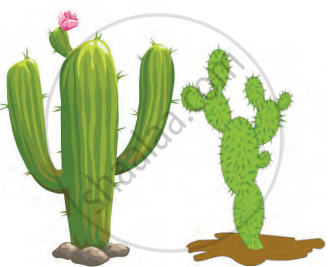Topics
Plant Life
The Leaf
- Root
- Types of Root
- Shoot System
- Stem
- The Structure of a Plant
- Types of Leaf
- Autotrophic Plants
- Insectivorous Plants
- Significance of Photosynthesis
- Transpiration
- Significance of Transpiration
- Modifications of Leaf
- Vegetative Reproduction
- Flower
The Flower
- Flower
- Structure of a Bisexual Flower
- Types of Flower
- Sexual Reproduction in Flowering Plants
- Pollination
- Self Pollination (Autogamy)
- Cross Pollination
- Agents of Pollination
- Fertilization Process
- Fruit
- The Seed
- Classification and Structure of Seeds
- Structure of a Dicotyledonous Seed
- Structure of Monocotyledonous Seed
- Formation of Seed and Fruit
- Germination in Some Common Seeds
The Cell
- Cell: Structural and Functional Unit of Life
- The Invention of the Microscope and the Discovery of Cell
- Organisms Show Variety in Cell Number, Shape and Size
- Cell Theory
- Plant Cell and Animal Cell
- Structure of the Cell
- Plasma Membrane
- Semi-permeable Membrane (Cell Membrane)
- Cell Wall - “Supporter and Protector”
- Cytoplasm - “Area of Movement”
- Nucleus - “Brain” of the Cell
- Plastids
- Non-living Substances Or Cell Inclusion
- Cell Division: an Essential Life Process
- Protoplasm
Human Body
Digestive System
- Food and Its Types
- Nutrients and Nutrition
- Component of Food
- Human Digestive System
- The Mouth and Buccal Cavity
- The Teeth and Its Structure
- Tongue
- The Salivary Glands
- The Food Pipe/Oesophagus
- The Stomach
- The Small Intestine
- Liver
- Pancreas
- Absorption of Food
- The Large Intestine
- Assimilation of Food
- The Aching Tooth
- Oral Health
Respiratory System
Circulatory System
- Blood Circulatory System in Human
- Blood
- Composition of Blood: Plasma (The Liquid Portion of Blood)
- Composition of Blood: Red Blood Cells (Erythrocytes)
- Composition of Blood: White Blood Cells (Leukocytes)
- Composition of Blood: Blood Platelets (Thrombocytes)
- Functions of Blood
- Human Heart
- Blood Vessels
- Circulation of Blood in the Heart (Functioning of Heart)
- Types of Closed Circulation
- Heart Beat - Heart Sounds "LUBB" and "DUP"
- Blood Pressure (B.P.)
- Blood Transfusion and Blood Groups (ABO and Rh system)
- Keeping the Heart Healthy
Health and Hygiene
Habitat and Adaptation
- Habitat
- Adaptations and Its Types
- Adaptations of Plants
- Adaptation in Aquatic Plants (Hydrophytes)
- Adaptation in Desert Plants (Xerophytes)
- Adaptation in plants of snowy regions
- Adaptations in Seeds for Transport Through Air
- Adaptation in Animals
- Adaptation in Aquatic Animals
- Adaptation in Desert Animals
- Adaptation in Mountain Animal
- Adaptation in Aerial Animals
- Introduction
- Experiment
Introduction:
Desert plants, like cacti, often have no leaves, or their leaves are small and needle-like to reduce water loss through evaporation. In many desert plants, leaves have transformed into thorns, which help minimise water loss and protect the plant from animals.
- The stems of desert plants store water and food, making them thick and fleshy. This helps the plant survive during dry periods.
- Since leaves are absent or small, the green stems perform photosynthesis, allowing the plant to make its own food.
- Desert plants have long roots that go deep into the soil to find water, and some roots spread wide to absorb water over a large area.
- A thick, waxy coating on the stems helps reduce water loss by sealing in moisture.

Cactus
Experiment
1. Aim: To observe and compare the water loss (transpiration) in a cactus and a leafy plant.
2. Requirements
- Two potted plants: one cactus and one leafy plant
- Two plastic bags
- String or rubber bands
3. Procedure
- Take a potted cactus and a potted leafy plant.
- Loosely tie a plastic bag around the leaves of each plant, making sure the bags cover the leaves.
- Place both plants in sunlight from early morning.
- In the afternoon, bring the plants into the classroom.
- Observe the inside of the plastic bags for any signs of water condensation.
4. Conclusion: There will likely be more water droplets inside the bag covering the leafy plant than the cactus. This indicates that leafy plants lose more water through evaporation (transpiration) compared to cactus plants, which are adapted to conserve water.
If you would like to contribute notes or other learning material, please submit them using the button below.
